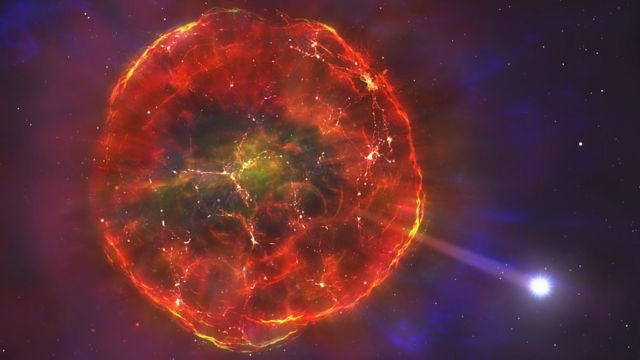A 'unique' star floating in the Milky Way galaxy after a huge explosion

Astronomers have discovered a star floating in the Milky Way galaxy after a powerful explosion in space.
They concluded that the process of exploding a supernova on the star was partial.
After becoming a supernova, the stars are often destroyed. But the explosion did not destroy the star. Instead, it flew into space at a speed of nine million kilometers per hour.
According to astronomers, the star was a "white dwarf" and orbited another star.
After this amazing astronomical event, the second star is also estimated to have sprung in the opposite direction.
Unusual structure
When two stars orbit each other, it is called "binary." But now astronomers have only been able to locate one of the two stars.
The celestial body that exploded was named SDSS J1240 + 6710 by scientists.
Discovered in 2015, the star's atmospheric structure was unusual.
It did not contain either hydrogen or helium. Instead it was an unnatural mixture of oxygen, neon, magnesium and silicon.
Using the Hubble Space Telescope, scientists also discovered carbon and sodium aluminum in it.
All of these elements were formed during the thermonuclear reaction that took place during the formation of the supernova.
But there are no metals like iron, nickel, chromium and manganese.
It is published in the journal Monthly Notices of the Royal Astronomical Society.

Hints and proofs
This means that the star could only become a partial supernova before nuclear flammability was extinguished.
"This star is unprecedented because it has all the qualities of a white dwarf," said Boris Gensick, lead author of the study and professor of physics at the University of Warwick in the UK. But its velocity is very high, and its abnormal abundance seems insignificant with its low mass. ”
According to him, the chemical composition of the star itself is evidence of 'nuclear burning'.
At the same time, low mass and high velocity indicate that the object came from a close 'binary system' and that there was thermodynamic combustion.
"It may have been a kind of supernova, but we've never seen one before."
Comparison with slingshot
Both stars may have formed a high velocity in the opposite direction, like a slingshot.
Scientists have also measured the mass of the star, which is lower than that of other white dwarfs.
Well-studied supernovae are classified as type I.
His study led to the discovery of 'dark energy' and is now used to measure the shape of the universe.
Further evidence is emerging that thermodynamic supernovae are formed in extremely isolated conditions.


No comments